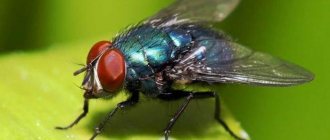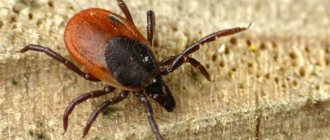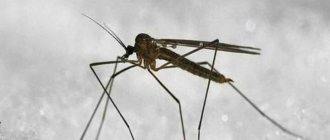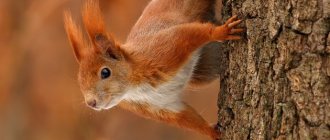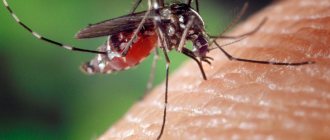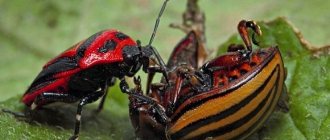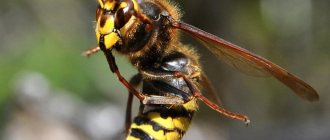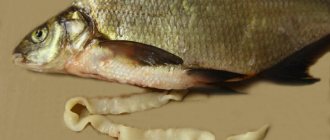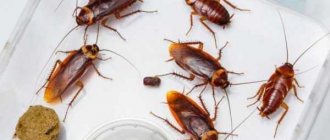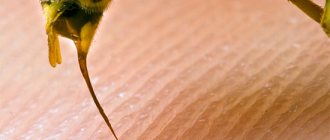Scientists are very obsessive people and often experiment on themselves. Briton John Haldane broke his spine to study the overload experienced by submariners. Russian scientist Ilya Mechnikov deliberately infected himself with typhus, and his colleague Nikolai Gamaleya drank a cocktail of cholera pathogens. American biologist Justin Schmidt has experienced the bites of more than 150 species of insects, and has compiled his own sting strength scale. Referring to the Schmidt scale data, our short review presents the most painful stinging insects in ascending order of pain level.
11
Sweet bee
In Russian, such bees were given the name “sweat”, as they are attracted by the aroma of salt in human sweat. The most numerous is the Halictidae family, numbering more than 3,500 species.
They often attack people, especially those who want to brush them off. The bee takes hand waves as a sign of aggression towards itself. In terms of bite strength, with an indicator of “1.0” it is at the lowest level.
Schmidt compared the stings of these bees to a small charge of electricity connected to every hair on the body.
10
Mosquito and midge bites
Mosquitoes are temporary ectoparasites. That is, only females bite us during the breeding season. The rest of the time, like males, mosquitoes feed on flower nectar. The reaction to a mosquito bite is caused by an anticoagulant, a substance secreted by the female when she pierces the skin. It prevents our blood from clotting during absorption. A single puncture does not pose any danger; mosquitoes, like midges, are dangerous in numbers. And if the body of an adult copes in most cases, then the body of a child, which is not yet formed and weakened, can react violently to bites. More detailed information on how to protect yourself and how to treat them if you are bitten: mosquitoes and midges.
Fire ants
The bites of the Solenopsis invicta species (red fire ants) are especially painful. The bite is comparable to a burn, which is why this type of ant is nicknamed fire ants.
The entomologist, giving a score of 1.2, called the bite sudden and sharp, but not irritating. Pain occurs when the poison solenopsin is injected, which causes redness at the site of the bite.
For people with weak immunity and increased allegorical reactions, small insects can pose a mortal danger.
9
Burner flies
No, this is not the familiar housefly, but its relative, which lives “in the wild” and feeds on the blood of warm-blooded animals, yes, including humans. The number of insects increases towards the end of summer - beginning of autumn, which is why they are also called autumn flies.
You can meet these flies everywhere in the countryside; they are synanthropes, human companions. They breed mainly in places where there are large domestic animals, laying eggs in manure or rotting plant debris.
Both males and females “bite” the fly - by rubbing the proboscis against the skin, the fly scrapes off the epidermis and, feeding on blood, simultaneously lets in poisonous saliva, causing severe irritation. Externally, the site of the bite on the skin differs little from that of a mosquito. In addition to causing painful itching, flies are mechanical carriers of staphylococcus, as well as the causative agents of anthrax, sepsis, tularemia and other diseases.
In addition to flies, wolfhart flies are also dangerous in Russia, which can lay eggs under human skin, subsequently causing myiasis.
Measures for a bite are still the same - relieving itching and swelling with the help of improvised means, an antihistamine in case of an allergic reaction, consulting a doctor in a severe case.
Means for preventing fly bites are also similar to those described above - protective clothing, mosquito nets, and the use of repellents.
Acacia ants / Acacia ant
Ants living on trees and shrubs belong to the large genus Pseudomyrmex. Found in Central and South America. The second species name is Bullhorn acacia ant.
They prefer to settle on acacia trees, as its juice protects them from natural enemies. The bite, rated 1.8 on the Schmidt scale, is quite painful.
Those who have encountered ants say that the bite is pinpoint, accompanied by piercing pain. It feels as if the body has been pierced with a sharp needle or squeezed between the two surfaces of a stapler.
8
1) Triatomine bugs
Insect order Hemiptera
includes a large number of different bugs.
Most species have distinctive suction mouthparts that resemble tubes. Most of them actually feed on plant sap, but there are also special species of the subfamily Triatomine bugs
that are not averse to feasting on the blood of large animals.
These insects carry a dangerous disease - Chagas disease
, which, fortunately, is found only in tropical areas of South America.
Symptoms of Chagas disease can vary depending on the time period after infection. At first it may be just a slight swelling, but as the disease progresses, more serious symptoms appear, such as heart problems and organ malformations. The disease can progress up to 12 years! If the patient is not treated from the very beginning of infection, the chronic disease leads to death. There are no effective treatments for this advanced stage of the disease, but medications can reduce the likelihood of death.
Dolichovespula maculata
Because of its appearance, the annoying insect is also called the White-faced Hornet. There are clearly visible white spots on the insect's head. Lives in the Northern Hemisphere of the planet. In America they are called yellow-jackets, and there are 18 species in total on the planet.
It makes its paper nests near human habitation, and often aggressively defends them with its entire flock. The bite is painful, intense, accompanied by a burning sensation and needle-like pain.
A wasp from the genus Dolichovespula is firmly entrenched in the top ten painfully stinging insects with a score of 2.0 points.
4) Wasps
Wasps are known to many people all over the world. These social insects with a bright yellow body and long antennae hunt parasites and pests, with each individual subspecies having its own prey. However, a wasp sting can be very dangerous for humans, as it is very painful and often causes allergic reactions. Some stung people go into anaphylactic shock and can die from just one wasp sting.
Social wasps / Vespinae
The large subfamily of Foldoptera is distinguished by the complex social organization of its colonies and the bizarre architectural forms of its nests.
The bite is painful, burning, as if a cigarette is being put out on the body. Particularly dangerous for people with allergies. On the Schmidt scale, 2.0 points, but according to those who encountered wasps in childhood, it is much higher.
These insects have a rather aggressive disposition, and they are able to defend themselves and their home by stabbing their sharp sting into the body several times.
6
#3. Wasps
Wasps
can be either social, living in swarms, or solitary. It is difficult to say which of them is more dangerous. Like bees, wasps that nest together with other relatives protect their home through joint efforts. One wasp, sensing danger, releases a pheromone into the air, provoking its fellow tribesmen to go on the attack . Therefore, mass attacks by these extremely aggressive creatures are not uncommon. And if one wasp sting with poison can be completely survived, then the body of the victims cannot always cope with several “bites”. Such attacks are often fatal .
Moreover, unlike bees, wasps often fly to a person’s home themselves , attracted by sweet fruits or food waste. Insects unceremoniously climb into the most unexpected places, where you least expect to see them. Therefore, in many cases, meeting them is extremely unexpected, and the consequences are almost always unpleasant. An attack by these insects, in addition to painful sensations, just as in the case of bees, can lead to allergic reactions and anaphylactic shock. The poison, penetrating into the blood, damages blood vessels and affects the kidneys . You can learn more about wasp stings here: Why is a wasp sting dangerous?
Wasps are most aggressive in hot weather . Sometimes only the slightest collision with them is enough for the insects to go on the attack. As it gets colder, on the contrary, these angry creatures become passive and apathetic. Therefore, the evening is the best time to fight them and the most suitable moment to get rid of the wasp's nest .
Honey bee / Apis mellifera
A beneficial insect that has been used by humans since ancient times to produce honey and wax. But they bite quite painfully. The bite site immediately turns red and there is a slight swelling.
The strength of the bite is rated at 2.0 points, and the pain is comparable to a severe burn. After stinging, the bee dies as it leaves a sting in the victim's body.
Many people volunteer to be bitten, as it is believed that this is an excellent remedy for radiculitis.
5
Bees
They live from May to September, in early October they hide in nests and hives, preparing for wintering. They do not have an aggressive disposition; they bite to protect their own lives. They collect flower nectar, feed on the juices of sweet fruits, and you can get hurt while relaxing in nature or buying sweets at the market.
On a note!
It is impossible not to notice the attack of a striped bee, since severe pain is immediately felt. Even if everything happened too quickly, the person did not have time to examine the pest, you can determine who bit it by the presence of a sting. Outwardly, it resembles a saw with fine teeth - it penetrates well, but it is impossible to pull it back out.
Stinging insects inject a toxic substance that causes an allergic reaction. The bee leaves the sting, and with it part of the abdomen. While inside the wound, the “weapon” continues to pump in poison. The severity of the manifestations depends on the amount of the toxic substance, the individual characteristics of the body, age, and location of the bite. Small children and people with weakened, pathologically weak immunity suffer bee attacks with difficulty.
Bee sting
Signs of a bee sting:
- a blister with a depression in the center with a dark dot - a sting;
- redness in diameter more than 1 cm;
- swelling, edema;
- local increase in temperature in the affected area;
- pain, burning;
- As the wound heals, itching appears.
Swelling from an insect bite can spread to the respiratory system and larynx in case of severe allergies. In addition to the local reaction, within 20 minutes after a bee attack, the following appears:
- nausea;
- weakness;
- diarrhea;
- dizziness;
- fever;
- violation of movement coordination;
- difficulty breathing;
- temperature increase;
- loss of consciousness;
- pale skin;
- change in blood pressure.
With a normal immune response, bite marks disappear in 2 weeks, pain disappears in 3 days.
Hornet/Vespa
The largest representative of the genus Vespa mandarinia grows up to 5.5 cm, and in addition, all species are equipped with a sharp sting. Hornets have spread throughout all regions of the Northern Hemisphere, except for the Far North.
By thrusting their sting, they release venom that contains acetylcholine. Because of this, the sting of these flying insects is more painful than that of ordinary wasps. On the pain scale it is rated at 2 points. Can bite several times in a row during one attack.
The poison, when it enters the body, causes allergies, and a person can die from anaphylactic shock if medical assistance is not provided in a timely manner.
By the way, on our website most-beauty.ru there is an interesting article about the most poisonous and dangerous insects in Australia.
4
Insect bites: 12 types and what to do for each of them at home + folk recipes
In the summer, when families go on holiday outside the city, to summer cottages or picnics near the lake, the risk of receiving unwanted bites from various insects increases. Some go away quickly, but particularly severe bites require immediate medical attention. We invite you to read about the 12 most common stings that you may feel while walking in the city or abroad on an exotic vacation.
12 types of various insect bites.
Mite.
The forest tick is the most dangerous for humans, as it is a carrier of dangerous diseases. The parasite's oral apparatus is designed in such a way that it allows it to attach deeply and firmly to the skin. In this case, a person will not experience pain and may find a tick on his body even after a few days. It may turn out that a tick bit you and fell off. Then at the site of the bite there will be a red spot with a circumference of several centimeters, and in the center there will be a black or red dot. In this case, you should immediately consult a doctor.
What to do at home if you are bitten by a tick? When it is not possible to go to the hospital, the tick can be removed at home. There are several ways:
Using thread. Place a loop around the base of the tick's body and gently pull it out, shaking it from side to side. The second method is tweezers. Here it is important to ensure that there is no rupture of the body. There are special devices for removing ticks, such as a special clamp, which can be purchased at any pharmacy. Lubricate the bite site with any antiseptic.
Mosquito.
Visually, mosquito bites appear on the skin as pink papules with the outline of a circle or drops. If you scratch the bite site, it will turn red because the mosquito's saliva will get into the surrounding tissue, which will intensify the reaction. There are cases when an allergic reaction with swelling occurs at the site of the bite.
Promo code OZONMG1D43 gives a discount of 300 points for the first order (1 point = 1 ruble)
- Download the Ozon mobile application and log in to your account.
- 300 points for the first order are awarded immediately after entering the code word OZONMG1D43
in the mobile application.- You can use points to pay up to 25% of the purchase price.
- Attention ! Points are valid for 5 days after activation.
You can use the promo code for Ozone not only for your first order:
- The code word OZONMG1D43
gives a discount -
it helps you save on repeat purchases, it opens up access to hidden promotions - use it every time.- Buyers who place orders worth over 2,500 rubles participate in closed sales.
- Delivery of all goods to OZONE is FREE!
Treating mosquito bites
Black elderberry and plantain leaves. After encountering a mosquito, it is best to wipe the area with a mashed black elderberry or plantain leaf. The leaves will help quickly relieve swelling and disinfect the bite site.
Ammonia . To relieve redness from a mosquito bite and itching, treat the skin with a cotton swab soaked in diluted ammonia (a tablespoon of alcohol per 3 tablespoons of water) or in a solution of baking soda (a teaspoon of soda per glass of water).
Attention! Menovazin. In order to relieve itching, swelling and irritation, lubricate the sore spot with an alcohol tincture of menovazine. This is a very effective remedy - no worse than the advertised expensive imported gels.
Garlic. It has been used for mosquito bites for a long time. It has already become a traditional folk remedy. Crush a clove of fresh garlic in a garlic press and dilute the resulting pulp with a small amount of water. Soak a piece of cloth in the solution and apply it to the bite site. Garlic will quickly relieve pain and itching and prevent swelling.
Soda. Add a small amount of water to a teaspoon of baking soda to form a thick paste. Make a small cake out of it and apply it to the sore spot. Wrap a wet cloth on top. After three hours, change the cake.
You can also dilute it more strongly with water and often lubricate mosquito bites with this soda solution. Salt. Blisters from mosquito bites will quickly disappear if you rub them with fine table salt. Just rub the skin gently to prevent damage.
Laundry soap. Lubricating the bite site with a very thick solution of the darkest laundry soap helps reduce itching and redness.
Wasp.
A wasp sting is very painful. A burning sensation is felt in its place, it swells and turns red. Sometimes a wasp sting causes a headache, high fever and a rash over the body.
We treat stings of wasps, bees and hornets
Garlic juice. If you or your child are bitten by a flying “striped bandit,” the first thing you need to do is remove the sting from the wound. Then lubricate the skin with fresh garlic juice or apply garlic paste.
If you couldn’t get the sting out, the wound began to fester and inflammation appeared, mix the garlic pulp with honey in equal parts, lubricate the wound, and apply a bandage. The procedure must be repeated 2 times a day.
Cabbage and burdock leaves. An effective folk remedy for treating insect bites is cabbage leaf. Cut off the thick part and lower the leaf into boiling water for just one minute to warm it up and become softer. After this, apply it to the bite.
For greater effect, coat one side of the leaf with honey and place this side on the sore spot. Wrap the compress with a bandage and wrap it with a warm bandage on top. You need to keep the compress all night. By morning the pain will go away. If swelling and induration remain, repeat the procedure.
As a rule, two procedures are enough for the pus to come out of the bite site and the swelling to subside. Instead of cabbage leaves, you can use burdock. Its medicinal properties are no less effective.
Parsley and potato juice. To relieve itching, you can also lubricate the bite site with parsley juice or apply a slice of raw potato.
Basil. Sometimes the itching from numerous bites is so strong that it leads to bloody scratching. A decoction of the medicinal herb basil will help quickly solve this problem.
Advice! To do this, boil 2 tablespoons of basil for five minutes in half a liter of water. Leave to cool and drink half a glass 3 times a day. Lubricate the bites with the same infusion and add to the bath when bathing.
Mint. Grind fresh mint leaves into a pulp and lubricate the skin. You can fill a piece of gauze with grass, tie it in a knot, and boil it in a liter of water for 5 minutes. Then squeeze out the knot, and lubricate the bites with the broth or apply a gauze knot to them.
As you can see, people have enough remedies to treat insect bites. And they, as practice shows, are much more effective than advertised “miracle” balms. And much cheaper! So the choice is yours.
Well, we’ll finally give you some tips on how you can avoid attacks from small pests:
- When going outdoors, give preference to light-colored clothing.
- Try not to wear perfume, aftershave or any other scents so that the bee does not confuse you with a flower.
- Talk to your doctor and increase your zinc intake if necessary. The insects are attracted to people who are deficient in zinc.
- Before going outside, apply Vaseline oil to bare areas of your body.
Bee.
Having stung, the bee dies. This happens because it leaves its digestive tract along with the sting. Therefore, a bee sting is quite easy to recognize. The sting should be removed immediately to prevent the poison from entering the bloodstream. A bee sting is the second most common cause of anaphylaxis. If you experience shortness of breath, decreased blood pressure, or difficulty breathing, call an ambulance.
First aid measures
Most often, adults are aware of how their body reacts to a bee sting. The situation with the child has an unknown outcome. In any case, initial actions must be taken quickly. The degree of distribution of toxic substances through the victim’s blood depends on this.
- Get rid of the sting immediately. It is better to do this with sterile tweezers or clean, disinfected hands. It is important that no residue remains under the skin. Otherwise, and if dirt gets into the wound, inflammation is inevitable.
- Soak a clean cloth or gauze with ammonia or ethyl alcohol, vinegar, a solution of soda or potassium permanganate. Apply to the wound. Keep it for as long as possible, repetition is possible. This minimizes pain, disinfects and slows down the development of swelling.
- You can wash the damaged area of the body with soap (72% household soap is better) and apply ice.
Hornet.
The insect pierces the skin like a bee, however, the sting does not leave a wound. The bite site swells, turns red, and acute pain appears. Symptoms of a hornet sting include: rapid pulse, nausea, vomiting, cold extremities, and a bluish tint to the lips, ears, and neck. Loss of consciousness is possible. Small children and adults with weakened immune systems experience a very painful hornet bite. If appropriate symptoms appear, you should immediately consult a doctor.
First aid
In the event of a hornet bite, it is necessary to implement a number of measures that will help get rid of the negative consequences. For example:
- Take the victim away from the place where the hornet carried out the attack, sit him in a comfortable position, unfasten the collar and loosen the belt.
- The hornet does not leave a sting, so you should not look for it.
- If the hornet was killed during a bite, then fragments of the sting may remain in the wound. In this case, it must be carefully removed in the most accessible way, disinfecting both the instrument and the wound itself.
- The affected area must be treated with an antibacterial agent, such as a slightly pink solution of potassium permanganate.
- Wipe the bite site with any alcohol solution. This could be vodka, moonshine, cologne, eau de toilette or medical alcohol.
- After this, ice or something cold is applied to the bite site.
- The victim should take an antihistamine to avoid allergic reactions.
- If a severe allergic reaction occurs, immediately take the victim to the hospital or call an ambulance.
How to properly treat a bite site:
- All movements should be clear, but light, without pressing on the bite site.
- The treatment product should be applied carefully with light movements.
- Under no circumstances should you squeeze out the poison, as it will no longer be present at the point of the bite.
- Before processing, you must wash your hands thoroughly with soap to avoid infecting the wound.
What is unacceptable to do:
- Apply pressure to the bite site.
- Rub the affected area.
- Cauterize the wound.
- Warm up the swollen area.
- Treat with iodine or brilliant green.
ethnoscience
As a rule, traditional medicine mainly uses natural ingredients. When people go on vacation, into nature, they can take with them tablets against diarrhea or against rapid digestion of food, but not against the bites of various insects, although if you are extremely careful, you can hardly feel the stings of bees, wasps or hornets, God forbid. But in nature, some plants that are always at hand will help overcome the consequences of bites. If a hornet bites you at home, you can also use traditional medicine.
The following plants can stop the spread of swelling and redness:
- Aloe juice or pulp.
- Plantain juice or leaf.
- Chopped parsley (greens).
Cooking method:
- The bite site is washed with clean water.
- After this, a plantain leaf, plantain or aloe juice, or a gruel of chopped parsley is applied to the bite site.
- Before this, the greens must be thoroughly washed.
- After applying the product, cover the bite site with a clean piece of cloth, gauze or bandage. Every 20 minutes it is necessary to change the compress or reapply plant juice.
On a note! In any case, you will need an allergy pill. If this happened in nature and no one had an allergy pill, and the victim was quite ill, then he would quickly have to be taken to a nearby hospital or try to call an ambulance. Therefore, when going out of town for a picnic, you should always take antihistamines and disinfectant liquids with you.
Flea.
The bites of these insects are most often observed on the legs. A flea can bite repeatedly. The bites look like small red dots. If you comb them, they take a long time to heal, and dark spots remain at the site of the bites for a long time.
Recognizing a flea bite
Two punctures will be visible in its center, which will help distinguish it from damage by other insects. This also suggests that in this case the person is not dealing with an allergic reaction. A person feels infestation with fleas immediately because they cause pain. This is due to the fact that the parasite does not inject an anesthetic into the wound, but injects an enzyme that prevents the blood from clotting. This enzyme causes itching and swelling.
First aid
- The first unpleasant symptom of flea infestation is severe itching, which affects both children and adults. Therefore, treatment of flea bites on humans involves, first of all, means for disinfecting the wound, relieving pain, swelling and itching.
- First, the affected area is washed with soapy water, rinsed and wiped dry, then an antiseptic (brilliant, iodine, alcohol, etc.) is applied. It is not recommended to use hot water, as it will cause severe itching.
- To relieve swelling, wipe the wound with vinegar diluted with water in a 1:1 ratio or a solution of citric acid.
Ant.
When an insect bites, it releases a toxin that causes an allergic reaction. The affected areas are visually similar to flea bites, but the ant's sting causes instant sharp pain. It is necessary to prevent infection of the wound and soothe itchy skin.
What to do if you are bitten by an ant?
- Wash the area with soapy water.
- Apply ice for 10-15 minutes.
- Lubricate with an antiseptic (preferably 70% alcohol or vodka).
For severe itching and redness, you can use pharmaceutical remedies for ant bites (balms or ointments):
- "Golden Star";
- "Vitaon";
- "Fenistil gel";
- "Advantan".
When going into a risk area, add an anti-anaphylactic pack to your first aid kit. Ant bites in children are no more dangerous than in adults. It is difficult to persuade a child not to scratch the damaged area, so use pharmacy ointments or folk remedies to relieve itching. If the child does scratch the area, apply a bandage or cover it with a breathable bactericidal adhesive plaster.
Treatment of ant bites with folk remedies
- Mix baking soda with water to a paste and apply to the sore spot.
- Wipe with ammonia diluted with water in a 1:1 ratio.
- Apply mint toothpaste.
- Place a lotion of milk or milk ice for 10 minutes.
- Crush a tablet of activated carbon, drop a little water, put the resulting paste on the bite site and cover with film.
- Apply a lotion with echinacea tincture, take a few drops orally to relieve an allergic reaction.
- Wipe the area with a cut onion or apply onion juice.
How to treat an ant bite with improvised means? Aloe juice, gruel from parsley or plantain leaves, and a piece of raw potato will help. By applying them, you can relieve swelling and redness, reduce itching and pain.
Lice.
Most often, insects live on the head, but there are species located on other hairy parts of the body. The bite causes severe itching and leaves a small red dot.
First aid for bites
The peculiarity of lice is that even after the parasites are removed, itching may persist for some time, which leads to nervous disorders and insomnia.
Traditional methods and pharmaceutical preparations are used to treat itching.
- The bite site is treated with soap and washed off with warm water.
- The affected areas are lubricated with vodka or alcohol diluted with water 1:1. Thus, the bites are disinfected and the infection does not penetrate into the deep layers of the dermis.
- Especially to relieve itching, including that caused by insect bites, one of the ointments is used - Fenistil or Psilo-balm.
- The product is applied to itchy areas 2-4 times a day. As prescribed by a doctor, local treatment can be combined with oral antihistamines.
If the itching is not relieved by these methods, the patient will need hospitalization in a hospital. In this case, antiallergic drugs are administered through intravenous infusions.
Horsefly.
The bite leaves a noticeable mark with swelling around it. A hot sensation occurs at the site of swelling. The bite causes itching, dizziness, and infection is possible.
How to help someone who has been bitten by a horsefly?
First aid and further treatment measures are necessary to get rid of unpleasant symptoms and heal the bite site faster. The first measures consist of the following:
- To prevent the horsefly’s saliva from expanding its effect, the bitten area must be pressed with a finger.
- Apply ice to relieve itching.
- It is important to wash the bite with soap and water. To do this, the water should be cool, because warm water can intensify the itching and burning. It is better to take soap without cosmetic additives.
- Lubricate the bitten area with alcohol or hydrogen peroxide. After this, you can apply iodine or brilliant green. It is very important to disinfect the wound to prevent inflammation from developing and to avoid infection.
A horsefly bite can be treated at home. It rarely happens that the victim needs to be hospitalized. Medical intervention is necessary if many bites have been inflicted or a person has developed severe allergic manifestations.
Traditional and home treatment methods are suitable to speed up the healing process. To do this, you can always use the tools that are at hand. Treat an insect bite in the following ways:
- A bandage with a solution of soda or boric acid will help relieve itching.
- Plantain leaf pulp is also effective in relieving the itching sensation. In order to prepare the raw material, you need to pick plantain leaves, wash and grind to form a paste.
- Then the resulting product is applied to the bite site, securing it with a bandage. If you don’t have fresh plantain nearby, you can use dried one. Before grinding, it is soaked in water.
- Plantain juice is an equally good way. A sterile napkin is soaked in it and applied to the bitten area.
- Dandelion helps with a horsefly bite with its juice, which should be used to lubricate the wound, splitting the stem of the plant.
- Onion juice is obtained by finely chopping the onion. It can also be used to alleviate the suffering of the patient.
- Fresh wormwood juice helps relieve pain and eliminate swelling.
In addition to these available remedies, mint, aloe juice, yarrow, black nightshade, parsley, lemon juice, sour cream, potato gruel, propolis or calendula tincture, and garlic gruel can help relieve the symptoms of a bite.
Bug.
The bites are massive, densely located next to each other and grouped. Bed bugs bite in one line. The number of bites of one bug is from 3 to 5 punctures of the skin with redness at intervals of 2-4 centimeters.
How and with what to treat?
In order to get rid of itching and damage to the skin, you can use both folk remedies and specialized medical creams or ointments. How to treat bedbug bites? First you need to wash the affected area with cool water and soap or a soda solution. This will relieve the itching a little. After this, you can apply an ice cube and wipe the skin with parsley or potato juice. Next, we will tell you what medications can be used for bedbug bites?
ATTENTION! Ammonia, ointment for bedbug bites “Fenistil” or cream “Rescuer” help well. The last two remedies for bedbug bites will also act as anti-allergens.
How to get rid of itching? It is best to anoint the damaged areas with Afloderm ointment or Zvezdochka balm. In case of a severe allergic reaction, you can use antihistamines - Diazolin, Diphenhydramine, Suprastin, Tavegil. However, before using them, it is best to consult a specialist doctor.
Bedbug bites on humans - treatment with folk remedies:
- Treat with mint leaves;
- Applying a softened dandelion stem;
- Lubricating damaged areas with garlic juice, which relieves irritation and swelling;
- Using plantain or bird cherry leaves;
- Applying a cut onion; Lubricating with aloe juice.
Fly.
The bite leaves a red mark and is unusually painful. The insect can carry a disease called rabbit fever. Symptoms: skin ulcers, fever, headache.
To reduce unpleasant symptoms, as well as the risk of infection after being bitten by an autumn fly or horsefly, several simple emergency measures should be taken:
- Rinse the wound with plenty of clean running water.
- Treatment with antiseptic solutions - you can use hydrogen peroxide, chlorhexidine, brilliant green.
- Reducing the severity of the inflammatory reaction using a special remedy for insect bites (Gardex balm) or anti-inflammatory medications for local external use (Lokoid ointment, Disinfection of the wound after a fly bite with hydrogen peroxide Fenistil).
- Combating possible allergic reactions with antihistamines, which include Loratadine, Diazolin, Suprastin.
Spider.
Lives only in certain areas. Its bite can only be felt after 6 hours, when pain occurs.
First aid for bites
When spiders bite adults or children, severe intoxication of the body develops, so you need to quickly provide first aid to the victim. If a person manages to see a jointed one and determine that it belongs to a poisonous species, then medical intervention will be required. You should call an ambulance, and only then try to alleviate the victim’s condition. The following measures will help prevent the spread of poison in the body:
- the bite area must be thoroughly washed under running cool water using laundry soap;
- if a limb is damaged, it should be immobilized to prevent the poison from penetrating into the subcutaneous tissue and healthy tissue areas;
- the bite site must be treated with solutions with antiseptic and antimicrobial activity - hydrogen peroxide, chlorhexidine bigluconate, iodine, brilliant green, ethyl alcohol, Miramistin, Furacilin;
- You can localize the area where toxins are spreading by pulling an arm or leg (without impairing blood circulation!) with an elastic bandage slightly above the bite area;
- Apply a cold compress in the form of pieces of ice wrapped in thick cloth to the reddened area of the skin.
If loss of consciousness occurs, then help with a spider bite consists of monitoring the victim until the ambulance arrives. It is necessary to turn the person on his side and make sure that he does not choke on the vomit.
Save so you don't lose
How to drive away bloodsuckers?
Currently, there are many means of protection against mosquitoes, including folk remedies.
They are stopped by the smells of anise and cloves, the smell of tomato leaves and eucalyptus. They cannot tolerate tobacco smoke or smoke from a fire to which spruce or pine cones have been added.
To prevent them from flying into the house, place branches of wormwood, tansy, yarrow, bird cherry near the front door, in general, whatever is at hand.
Advice! Put a bouquet of daisies on the table in the room, and it’s beautiful, and you can be sure that itchy insects won’t bother you for about a week. Or put a cotton ball on the windowsill with a few drops of eucalyptus, lemon, mint or lavender oil.
Save so you don't lose
Source
Red American Reaper Ant / Pogonomyrmex barbatus
The inhabitant of the forests of North America has one of the most powerful poisons among all insects on the planet. The sting force according to the Schmidt Sting Pain Index is 3 points.
Highly organized ants create colonies with up to 12 thousand families. They are omnivores. And in addition to plant food, they happily hunt other insects, amphibians and mammals. They hunt in large groups, jointly attacking the prey.
The bite is doubly painful because the harvester ant first bites with its powerful jaws and then inserts a sharp sting that is hidden in the abdomen.
3
#1. Ticks - insect bites #1
And finally, ticks. We have already talked about these insects several times. And all because meeting them is both unpleasant and dangerous to health and life . Moreover, during the hunting season, ticks can cause concern to many people throughout the vast territory of both Russia and the whole world.
__________________
You can read more about ticks here:
– Tick-borne encephalitis is the No. 1 disease caused by a tick bite
– Borreliosis – disease No. 2 caused by a tick bite
– Tick-borne diseases No. 3
– Do I need to be vaccinated against ticks?
– How do ixodid ticks attack?
__________________
Mite
A tick bite is usually not felt . Most often you can see it when it begins to swell with blood. Some ticks are capable of causing paralysis with their venom. However, these are not found on Russian territory. Attacks by our domestic parasites pose a greater risk of transmitting pathogens of dangerous diseases . Many of them affect the nervous system, causing irreversible damage to internal organs, making them disabled or even killing.
With a tick bite you can catch numerous types of fevers , typhus , encephalitis , Lyme borreliosis , tularemia and many other diseases. The most famous in our area are the taiga tick, forest tick, dog tick and others.
By
Paper wasps
The most numerous and extensive subfamily in the family of social wasps, including 25 genera and more than 800 species. Some are distinguished by primitive behavior, and some are highly organized.
Both of them sting painfully, and on the scale their bite is rated at 3.0 points. The sting is released, and a burning pain is felt followed by numbness at the site of the bite.
In primitive animals, a nest of 15–20 individuals is formed around one female. Sometimes nests contain up to 100 individuals. Such paper wasps are also found in Russia, but fortunately, they do not sting as often as their relatives on the North American continent.
Mosquitoes
Let's start with the most common mosquitoes - if in the city mosquito nets and repellers can help get rid of annoying buzzing insects, then in nature it is almost impossible to get rid of miniature bloodsuckers. They are especially annoying near water, in shady places and with the arrival of cool twilight.
Females sting mosquitoes - they pierce the skin with a thin long proboscis and suck the blood from the capillary. The consequences of a mosquito bite are also known to almost everyone; this is redness and a swollen blister that itches for a long time - the degree of reaction is usually individual.
But the bites of these insects are not as harmless as they seem! There are 10 species of malarial mosquitoes in Russia (mainly in Siberia, but also found in the European part), and ordinary mosquitoes are quite capable of transmitting all sorts of infections, from encephalitis to yellow fever. Moreover, according to statistics, approximately 5-10% of mosquitoes in our latitudes are infected with some kind of disease.
A strong aqueous solution of baking soda will help relieve swelling and itching from a mosquito bite; any available substance with menthol in the composition (for example, toothpaste) can also help - they just need to be spread on the bite site or, after soaking a handkerchief, make a mini-compress. You can also wipe the bite site with a weak vinegar solution (vinegar: water = 1:10) or apply ice wrapped in a cloth.
Among the folk remedies for relieving itching and swelling, we will name mashed leaves of plantain, cabbage or mint, as well as slices of raw potatoes or parsley decoction.
- 8 plants that repel mosquitoes
These plants repel mosquitoes no worse than chemical repellents!
Wasps of the genus Pepsis
Hunters of tarantulas, such wasps have settled throughout the planet, and grow up to 5.4 cm in length. The wasp received its species name due to the fact that it often hunts dangerous arachnids.
Those who have encountered bites say that it is a fierce, blinding pain, as if the body was electrocuted. Schmidt rated this pain at 4.0 points. They have a thick, sharp sting that leaves a mark on the body.
A fairly strong insect that can easily cope with large tarantulas and other spiders that are much larger in size.
1
Midges
This collective name hides a mass of tiny (up to 2-3 mm long) stinging dipterous insects that externally resemble miniature flies. Like mosquitoes, it is the females who “hunt” people - they need blood and lymph as a source of protein for laying eggs.
Most often, midges are found near flowing bodies of water or in places where garbage accumulates. Their activity zone is daytime, low windy weather at temperatures of 8-30°C.
Oddly enough, the consequences of a bite from this little thing are much more serious than a mosquito bite - the swelling is greater, lasts much longer and hurts more. This is due to the fact that when attacked, the midge literally chews the tissue and injects poisonous saliva, causing bleeding and swelling.
Alas, midges are also often carriers of dangerous diseases, helminth eggs, and viral infections. Enzymes from midge saliva, injected into the wound during a bite, can cause a severe allergic reaction - simulidotoxicosis, accompanied by a sharp rise in temperature, chills, headaches, and inflammation of the lymph nodes.
You can protect yourself from the abundance of midges by using tight-fitting clothing and a hat with a mosquito net (mosquito net) impregnated with repellent. In case of a bite, treat it with ammonia, any alcohol infusion, iodine or brilliant green to reduce itching. The remaining measures for a midge bite are similar to those described above for a mosquito bite.
If an allergic reaction develops, you need to take an antihistamine tablet and consult a doctor immediately.
Tropical Bullet Ant / Paraponera clavata
First on our list of powerfully stinging insects on most-beauty is a large ant that lives in the tropical forests of South America. In English they are called Bullet ant, and on the pain scale they have the highest level of painful sting of 4.0+.
In addition, they have poison. Adults grow up to 2.5 cm, with a sting length of 3.5 mm. A highly organized and aggressive insect. Everyone in the colony has their own role, and the ant strictly adheres to it all its life. They attack the victim in a group.
Some Indian tribes use them in an elaborate initiation rite where young men wear gloves filled with painfully stinging ants. Michael Smith's body map of pain.
PS
Bed bugs
The bites of different insects differ from each other, but in some ways they have similarities. A bug attack resembles a mosquito attack; swelling, redness, a blister, and severe itching appear. But bed bugs infest all year round, regardless of the temperature outside the window.
Insect bites
On a note!
Bites of domestic insects - bedbugs, initially appear with a certain frequency every 10-14 days. As the number of parasites increases, the interval shortens. With mass infection, new traces appear every night.
Bed bugs are active in the dark and attack a sleeping person. A round spot remains on the skin, accompanied by severe itching. The main symptom is the location of the wounds in the form of a path. The insect bites up to 5 times during one meal, the bites are placed in pairs at small intervals. With a large number of bedbugs, the spots merge with each other.
Executioner wasp
This rare species of wasp, native to Central and South America, despite the fact that it is not included in the Schmidt scale, has perhaps the strongest bite among insects.
Popular nature blogger Coyote Peterson became famous for testing many insect bites on himself to determine which ones stung the most. So, on one of his expeditions, he experienced the terrifying sting of the executioner wasp.
If you want to take a look at this, watch this fascinating video:
For those who haven’t looked, let’s say that the sting of this wasp turned out to be the most painful. In addition, the severe pain after the bite lasted for several hours. The effect of the poison lasted about a week.
Fleas
Small wingless fleas are blood-sucking insects. There are many species of them, they are found everywhere, feeding on the blood of humans, as well as animals and birds. So if you have chickens, rabbits, a guard dog, mice in the underground, a cat walking on its own comes to visit, or squirrels at the feeding trough, then fleas are also present.
Flea bites appear as red itchy spots with a dot in the center - usually there are several spots, because... The insect does not limit itself to a one-time bite and drinks blood “in reserve.” You will definitely notice the painful moment of piercing the skin, but you are unlikely to grab a tiny, fast-jumping insect to figure out whether it belongs to one species or another.
How can a flea bite be dangerous? It usually goes away on its own within a couple of days, but there can be complications. These insects can cause two diseases in humans: pulicosis and sarcopsillosis. Plus a possible allergic reaction. In addition, fleas are carriers of many dangerous infections and can be intermediate hosts of some parasitic worms, such as nematodes.
What to do if bitten by fleas? In the same way, first of all, relieve swelling and itching, as we described above. If allergic reactions occur, it is necessary to use drugs with antihistamine components, and in case of complications (fever, weakness, headache, diarrhea, etc.) consult a doctor.
Prevention measures include treating pets with insecticidal preparations (shampoos, tablets, etc.).
Bottom line
In addition to the insect sting pain scale that Schmidt compiled, another American, Michael Smith, identified the most painful points on the human body. Here, the honey bee was chosen as the experimental instrument.
The most painful thing a bee stings is a person's nostril. Smith estimated this indicator at 9.0 points. In second place is the upper lip. A bite to this area on the face is 8.7 points. The most painless areas of the bites were the human skull and the very tip of the middle toe. Only 2.3 points.
In conclusion, we note that the world and the scientific community did not appreciate the impulses of the American naturalist and brave entomologist. In 2015 he was awarded the Ig Nobel Prize. Michael Smith was also awarded the same award. Justin Schmidt was born in 1947 and now has more than a thousand bites from various types of insects, and in his scale he described the bites of 83 types of insects. But no matter what experiments scientists encourage themselves to undertake, be careful in urban areas and in nature.
10) Malaria mosquitoes
Mosquitoes are terrible irritants because they suck blood and can drive a person crazy under certain conditions. They lay their eggs near stagnant bodies of water, and from one clutch millions of individuals are born. However, the biggest problem is that mosquitoes can carry dangerous diseases such as malaria. Thousands of people die from this disease every year; these mosquitoes are the most dangerous and deadly insects on the planet.
Treating stinging insect bites
- Remove the sting and apply fresh garlic paste; be careful with this product, as a burning sensation may occur.
- You can prepare a natural compress from burdock leaf. To do this, pour boiling water over it and coat it with a thin layer of honey, and then apply it to the bite site.
- A cold compress is also effective in relieving pain .
- Be sure to treat the affected skin with any alcohol-based disinfectant .
- numb the bite site , rinse them and crush them in your palms, apply to the wound. Mint will also relieve swelling and redness.
Wasp: 2.0
0
The wasp defends its nest with maximum aggression. The main difference between a bee and a wasp is that wasps have a thinner waist, longitudinally folded wings and a distinct black and yellow coloration. Despite being a nuisance to people living nearby, this wasp is also beneficial because it eats other insects. Schmidt describes the wasp's sting as smoky and hot, almost comparable to the contact of a cigarette with your tongue. The pain index for a wasp sting is 2.0.
Traditional methods of treating bites
Other remedies are also used to treat insect bites. Consider a short list of popular folk recipes .
Aloe juice
Lubricate the bite site with healing aloe juice and after 15-20 minutes you will forget about itching and pain. This remedy effectively copes with the bites of almost any insect.
Apple vinegar
Vinegar soak is an ancient method of our grandparents. Dilute vinegar with water in a ratio of 1:1 or 1:2 and make a lotion. The product relieves redness and itching, disinfects the wound.
Lemon juice
Freshly squeezed lemon juice diluted with boiled water (1:1) will help soothe itchy skin. A few drops squeezed from a lemon wedge are enough.
Vodka
You can cope with unpleasant sensations, relieve swelling, irritation and itching with the help of vodka lotion. Soak cotton wool in alcohol and lubricate the bite area.
The most dangerous insect in Russia
Blister beetle
The most dangerous insect in Russia is the blister beetle . The seemingly harmless beetle leaves marks on the skin that turn into blisters. After all, his body is saturated with the poison cantharidin, which is dangerous even upon contact with the skin. If poison gets into an open wound and into the blood, it leads to disruption of the kidneys and bladder. The beetle is especially dangerous for children; an encounter can end in failure. It is worth excluding any contact with these insects and not touching them. In the old days, the poison extracted from these insects was used as a poison, and worked flawlessly, sending important people to the next world. Swallowing a beetle is extremely dangerous and will require immediate medical attention .
This is a list of the most dangerous insects in Russia. In addition to them, other creatures also pose a danger - spiders, which are not classified as insects. A meeting with karakurt, which can occur in the Astrakhan steppes, Orenburg region, and on the Yenisei, is dangerous. It is always necessary to be careful; insects are not large in size, and the danger from them is usually underestimated, but every year hundreds of people die from fatal encounters, bites, or even skin contact.
Separately, it is worth noting ticks, which dig into the body and carry numerous diseases that can lead to death or disability. It is worth behaving carefully with bees and wasps, large and brightly colored beetles, and ants. When going out into nature, to the country, children should be instructed about safety measures, and adults should be vigilant.
Arthropod bites
Spiders are representatives of the family, often found in residential premises (apartments, houses). Almost all types of house spiders never attack a person; if a bite occurs, it is usually when a person awkwardly touches the insect’s web. The bites of the gray, brown and black spider are not dangerous; the only thing that will indicate a bite is a slight redness. You can also find a less peace-loving arachnid at home - the black widow; the insect loves dry firewood, places under the roof, sheds and basements. Her saliva contains dangerous, highly toxic poisons - neurotoxin and hemolysin. After its bite, symptoms develop and increase at lightning speed: pain, high fever, clouding of consciousness, convulsions, blue discoloration of the bite area, nausea, severe headache, etc.
